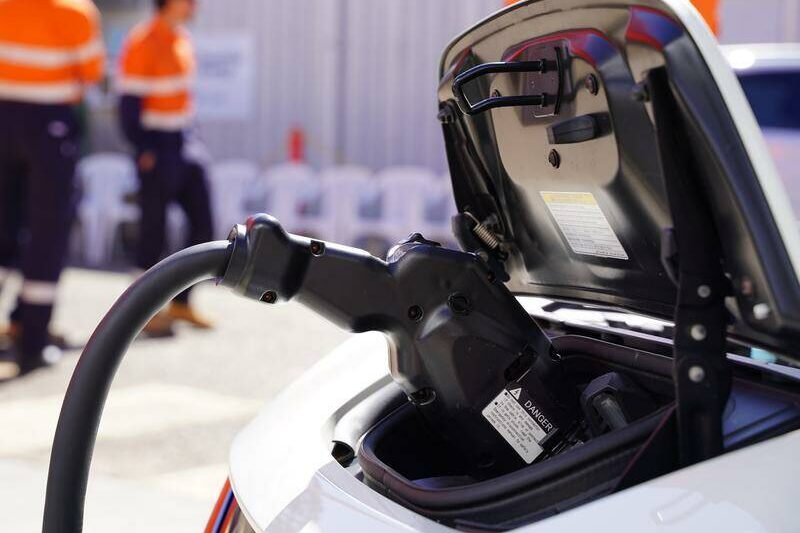
By Jennifer Dudley-Nicholson
An electric car will be used to power a “house of the future” in regional Australia to test whether vehicle batteries could be used as energy solutions nationwide.
The CSIRO and power provider Essential Energy announced the trial on Tuesday, revealing vehicle-to-grid technology would be tested in NSW’s Port Macquarie.
The trial, using a Nissan Leaf electric car, is expected to continue until March next year.
It comes less than one week after NRMA, iMove and the University of Technology Sydney launched a project investigating V2G technology, and after Amber Electric teamed with the Australian Renewable Energy Agency for a trial.
The latest vehicle technology test will be held at Essential Energy’s Innovation Hub, where researchers will set up a home-like environment in a lab with solar panels and batteries.
The home will also feature appliances including a television, pool pump, hot water system, fridge, dishwasher and clothes dryer to test whether energy stored in an electric car battery could power the household when needed, CSIRO transport electrification team lead Kate Cavanagh said.
“We are using real household appliances in a laboratory setting to provide a range of realistic and controllable household types and scenarios,” Ms Cavanagh said.
“V2G technologies have enormous potential and they’re going to play a big part in the future electricity system but, at the moment, our understand of how they might work in the Australian context is limited.”
A Nissan Leaf electric car and bi-directional charger will be used for the trial, being one of few V2G products approved by Standards Australia, and researchers plan to create different household power scenarios to test its limits.
If proven, electric cars could serve as powerful solar batteries for households and reduce demand during peak times, CSIRO project technical lead Dr Sam Behrens said.
“If you use your EV to store solar energy as it is generated during the day, you can then use that for night-time electricity needs,” he said.
“At the moment, you can buy a battery and connect it to your home but those batteries have small storage capacities compared to an EV, which has as much as five times more storage.”
Drawing power from electric car batteries could also reduce costs for power companies, Essential Energy chief operating officer Luke Jenner said, by “offsetting the need for additional investment in the network”.
Despite wide interest, V2G technology has yet to be approved for use throughout Australia and only some electric vehicles support the technology.
Nissan, Volkswagen, Cupra and Mitsubishi are among automakers who have included V2G technology in vehicles, while other brands, such as Tesla, have expressed interest in adding support to future vehicles.
A V2G trial led by NRMA will conduct consumer research into attitudes towards the technology and investigate ways to introduce it in Australia.
Amber Electric’s V2G trial is expected to expand next year with the arrival of 50 bi-directional chargers for use in participants’ homes.
Who can be trusted?
In a world of spin and confusion, there’s never been a more important time to support independent journalism in Canberra.
If you trust our work online and want to enforce the power of independent voices, I invite you to make a small contribution.
Every dollar of support is invested back into our journalism to help keep citynews.com.au strong and free.
Thank you,
Ian Meikle, editor





Leave a Reply